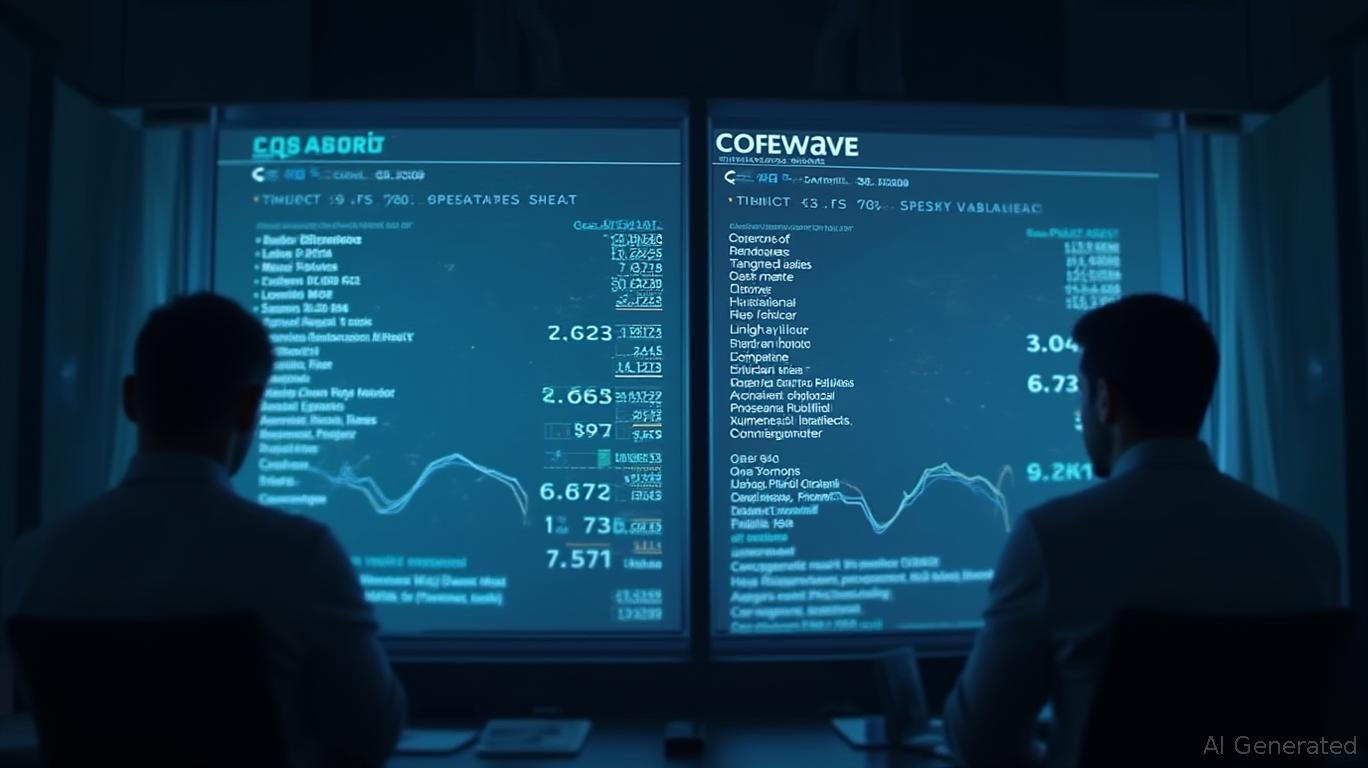CoreWeave's Meme Stock Surge Points to AI Infrastructure Opportunities—and Risks
CoreWeave (NASDAQ: CRWV) has become the poster child of the 2025 meme stock era, its shares soaring 270% from its March IPO price on short squeezes and retail frenzy. Yet beneath this volatility lies a broader truth: the AI infrastructure boom is creating opportunities in companies with scalable data platforms—provided investors avoid the leverage-driven traps that plague
. This article dissects how to identify undervalued AI supply-chain leaders while steering clear of overhyped stocks reliant on speculative momentum.The CoreWeave Paradox: Growth vs. Financial Fragility
CoreWeave's meteoric rise—driven by its $4 billion OpenAI deal and 420% revenue growth—has drawn comparisons to meme stocks like GameStop. But its financials reveal cracks: a 54% debt-to-assets ratio, $314.6M net losses in Q1 2025, and cash burn that could hit $20B annually. Retail-driven short squeezes (45% of shares shorted) have inflated its valuation to 26x sales, far above peers.

The takeaway? CoreWeave's ascent highlights the demand for AI infrastructure—but its reliance on debt and speculative trading makes it a high-risk bet. Investors must instead focus on firms with scalable data platforms, sustainable moats, and low leverage, even if they lack meme-stock hype.
Undervalued AI Infrastructure Plays to Consider
The AI supply chain is crowded, but three companies stand out for their growth trajectories and financial discipline:
1. Hut 8 (NASDAQ: HUT)
- What it does: Builds AI-optimized data centers, including a 430MW facility under construction.
- Valuation: P/E of 4.1 vs. CoreWeave's 26x sales.
- Why it's undervalued: Hut 8's 0% long-term debt (as of Q1 2025) contrasts sharply with CoreWeave's $9B in debt. Its focus on energy-efficient facilities (key for sustainable AI scaling) and partnerships with quantum computing firms position it as a backbone for next-gen infrastructure.
2. Innodata (NYSE: INOD)
- What it does: Provides training data for AI models, with contracts at five of the “Magnificent Seven” tech firms.
- Growth: 127% revenue growth in 2024, 493% EPS growth.
- Why it's undervalued: A P/E of 4.2 and minimal debt (unreported but implied by its valuation) make it a bargain. Its niche role in data curation—critical for AI accuracy—creates a defensible moat.
3. Palantir (NYSE: PLTR)
- What it does: Integrates AI into enterprise workflows for governments and Fortune 500 firms.
- Financials: 0.1% debt-to-equity ratio, $5.4B in cash. Its WACC of 8.3% (vs. CoreWeave's implied higher borrowing costs) reflects stable financing.
- Why it's a moat-heavy pick: Long-term government contracts (e.g., $264B market cap supported by defense spending) and proprietary AI tools create a near-monopoly in certain sectors.
The Borrowing Cost Crucible: Why Palantir Outshines CoreWeave
While CoreWeave's debt-laden model faces rising interest rates and failed share deliveries, Palantir exemplifies the power of low leverage and cash reserves. Its WACC of 8.3%—driven by a 5% cost of debt—allows it to fund growth without overextending. Compare this to CoreWeave's likely sky-high borrowing costs, given its 54% debt load and speculative market dynamics.

The lesson? Avoid companies where debt fuels growth (e.g., CoreWeave) and prioritize firms with self-amortizing debt strategies or minimal leverage. Hut 8's $0 long-term debt and Palantir's fortress balance sheet are models to emulate.
Investment Strategy: Embrace Moats, Avoid Meme-Driven Momentum
The AI infrastructure boom isn't a fad—it's a foundational shift. But investors must distinguish between sustainable growth and speculative mania. Here's how to navigate it:
- Focus on Scalable Infrastructure: Prioritize firms like Hut 8 (data centers) and Innodata (training data) that underpin AI's technical backbone.
- Avoid Debt Traps: CoreWeave's 54% debt-to-assets ratio is a red flag—seek companies with <10% debt-to-equity.
- Value Moats Over Hype: Palantir's government contracts and Innodata's enterprise partnerships are moats; meme-driven short squeezes are not.
Conclusion: The AI Supply Chain's Quiet Winners
CoreWeave's rise—and risks—mirror the broader tension in the AI boom: explosive growth vs. financial fragility. Investors chasing meme-stock euphoria may end up burned. Instead, look to Hut 8's data centers, Innodata's training data, and Palantir's enterprise AI for steady, scalable growth. These companies are the unsung heroes of the AI revolution—built to last, not just to surge.
Final Advice: Buy AI infrastructure firms with low debt, high cash flow, and defensible moats. Avoid those relying on short squeezes or unsustainable borrowing. The future belongs to the engineers, not the speculators.

Comments
No comments yet